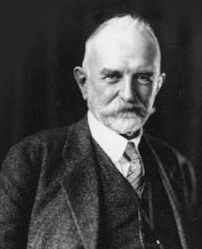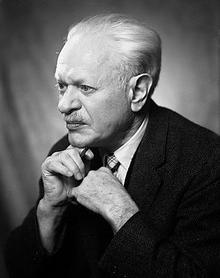
A symbol is a mark, sign, or word that indicates, signifies, or is understood as representing an idea, object, or relationship. Symbols allow people to go beyond what is known or seen by creating linkages between otherwise different concepts and experiences. All communication is achieved through the use of symbols: for example, a red octagon is a common symbol for "STOP"; on maps, blue lines often represent rivers; and a red rose often symbolizes love and compassion. Numerals are symbols for numbers; letters of an alphabet may be symbols for certain phonemes; and personal names are symbols representing individuals. The academic study of symbols is called semiotics.

Metonymy is a figure of speech in which a concept is referred to by the name of something closely associated with that thing or concept.

Symbolic interactionism is a sociological theory that develops from practical considerations and alludes to humans' particular use of shared language to create common symbols and meanings, for use in both intra- and interpersonal communication. This theory was founded by George Herbert Mead. According to Mead, symbolic interactionism is "The ongoing use of language and gestures in anticipation of how the other will react; a conversation". According to Macionis, symbolic interactionism is "a framework for building theory that sees society as the product of everyday interactions of individuals". In other words, it is a frame of reference to better understand how individuals interact with one another to create symbolic worlds, and in return, how these worlds shape individual behaviors. It is a framework that helps understand how society is preserved and created through repeated interactions between individuals. The interpretation process that occurs between interactions helps create and recreate meaning. It is the shared understanding and interpretations of meaning that affect the interaction between individuals. Individuals act on the premise of a shared understanding of meaning within their social context. Thus, interaction and behavior is framed through the shared meaning that objects and concepts have attached to them. Symbolic Interactionism refers to both verbal and nonverbal communication. From this view, people live in both natural and symbolic environments.

George Herbert Mead was an American philosopher, sociologist, and psychologist, primarily affiliated with the University of Chicago. He was one of the key figures in the development of pragmatism. He is regarded as one of the founders of symbolic interactionism, and was an important influence on what has come to be referred to as the Chicago School of Sociology.

Kenneth Duva Burke was an American literary theorist, as well as poet, essayist, and novelist, who wrote on 20th-century philosophy, aesthetics, criticism, and rhetorical theory. As a literary theorist, Burke was best known for his analyses based on the nature of knowledge. Further, he was one of the first individuals to stray from more traditional rhetoric and view literature as "symbolic action."
Linguistic determinism is the concept that language and its structures limit and determine human knowledge or thought, as well as thought processes such as categorization, memory, and perception. The term implies that people's native languages will affect their thought process and therefore people will have different thought processes based on their mother tongues.
Consubstantiality, a term derived from Latin: consubstantialitas, denotes identity of substance or essence in spite of difference in aspect.

Owing to its origin in ancient Greece and Rome, English rhetorical theory frequently employs Greek and Latin words as terms of art. This page explains commonly used rhetorical terms in alphabetical order. The brief definitions here are intended to serve as a quick reference rather than an in-depth discussion. For more information, click the terms.
For writing communication, Identification is a key term for the discussion of rhetoric in Kenneth Burke′s A Rhetoric of Motives. Burke himself states that "identification" is more important for the work than persuasion, traditionally associated with rhetoric.

The dramatistic pentad forms the core structure of dramatism, a method for examining motivations that the renowned literary critic Kenneth Burke developed. Dramatism recommends the use of a metalinguistic approach to stories about human action that investigates the roles and uses of five rhetorical elements common to all narratives, each of which is related to a question. These five rhetorical elements form the "dramatistic pentad". Burke argues that an evaluation of the relative emphasis that is given to each of the five elements by a human drama enables a determination of the motive for the behaviour of its characters. A character's stress on one element over the others suggests their world view.

Dramatism, a communication studies theory, was developed by Kenneth Burke as a tool for analyzing human relationships through the use of language. Burke viewed dramatism from the lens of logology, which studies how people's ways of speaking shape their attitudes towards the world. According to this theory, the world is a stage where all the people present are actors and their actions parallel a drama. Burke then correlates dramatism with motivation, saying that people are "motivated" to behave in response to certain situations, similar to how actors in a play are motivated to behave or function. Burke discusses two important ideas – that life is drama, and the ultimate motive of rhetoric is the purging of guilt. Burke recognized guilt as the base of human emotions and motivations for action. As cited in "A Note on Burke on "Motive"", the author recognized the importance of "motive" in Burke's work. In "Kenneth Burke's concept of motives in rhetorical theory", the authors mentioned that Burke believes that guilt, "combined with other constructs, describes the totality of the compelling force within an event which explains why the event took place."
Definition of Man, also known as the Definition of Human, originated from a summary essay of Kenneth Burke (1897–1993) which he included in his 1966 work, Language as Symbolic Action. Burke's work in communication has spanned many fields and focuses primarily on rhetoric. He is also known for his theory of Dramatism, wherein he characterizes life to not just reflect or be like a drama but rather that life is drama.

The "rhetoric of social intervention" (RSI) model is a systemic communication theory of how human beings symbolically constitute, maintain, and change social systems. The RSI model was developed in the writings of communication theorist William R. Brown.

Modern rhetoric has gone through many changes since the age of ancient Rome and Greece to fit the societal demands of the time. Kenneth Burke, who is largely credited for defining the notion of modern rhetoric, described modern rhetoric as
"rooted in an essential function of language itself, a function that is wholly realistic, and is continually born anew; the use of language as a symbolic means of inducing cooperation in beings that by nature respond to symbols."

Language as Symbolic Action: Essays on Life, Literature and Method is a book by Kenneth Burke, published in 1966 by the University of California Press. As indicated by the title, the book, Burke's 16th published work, consists of “many of Burke's essays which have appeared in widely diverse periodicals” and has thus been regarded as one of the most significant resources for studying and comprehending Burke’s ideas.
A condensation symbol is "a name, word, phrase, or maxim which stirs vivid impressions involving the listener's most basic values and readies the listener for action," as defined by political scientist Doris Graber. Short words or phrases such as "my country," "old glory" "American Dream," "family values," are all condensation symbols because they conjure a specific image within the listener and carry "intense emotional and effective power." Often used to further the meaning of a symbol or phrase, the condensation symbol has a semantic meaning, but through long-term use, it has acquired other connotations that further its symbolic meaning. Doris Graber identified three main characteristics of condensation symbols, as they:
- Have the tendency to evoke rich and vivid images in an audience.
- Possess the capacity to arouse emotions.
- Supply instant categorizations and evaluations.

Constitutive rhetoric is a theory of discourse devised by James Boyd White about the capacity of language or symbols to create a collective identity for an audience, especially by means of condensation symbols, literature, and narratives. Such discourse often demands that action be taken to reinforce the identity and the beliefs of that identity. White explains that it denotes "the art of constituting character, community and culture in language."
Marie Hochmuth Nichols (1908–1978) was an influential rhetorical critic.
In theology, logology deals with the verbal nature of doctrines in suggesting a further possibility that there may be analogies between "logology" and theology. According to literary theorist Kenneth Burke, logology works through the forms of religious language and its functions in the political sphere when rhetoric acts as a symbolic action. If it is true that language is symbolic, then speech is the result of man acting as a symbol-using animal, making it necessary to understand that logology can also be defined as the study of "words about words".
Identification is a key theme in the works of Kenneth Burke as part of the New Rhetoric movement. Contemporary rhetoric focuses on cultural contexts and general structures of rhetoric structures. Burke was a notable contemporary U.S. rhetorician who made major contributions to the rhetoric of identification. James A. Herrick describes one of Burke's foundational ideas with identification is that “rhetoric makes human unity possible, that language use is symbolic action, and that rhetoric is symbolic inducement.” For Burke, words were Terministic screens through which people see the world and interact with each other. Herrick, further explains that identification in rhetoric is crucial to persuasion, and thus to cooperation, consensus, compromise, and action. Burke believed that the most serious human problem was to be alienated or separated, and rhetoric was to be that problem's only solution. Much of his work was based on bringing people back together. However, Burke argues that “Identification is affirmed with earnestness precisely because there is division; Identification is compensatory to division.” Rhetoric's goal, in regards to identification, is to bring people together of whom have been separated by estrangement or opposition. Those who feel isolated or separate from others may identify joint interests with others or become part of an institution -- "‘Belonging’ in this sense is rhetoric."






